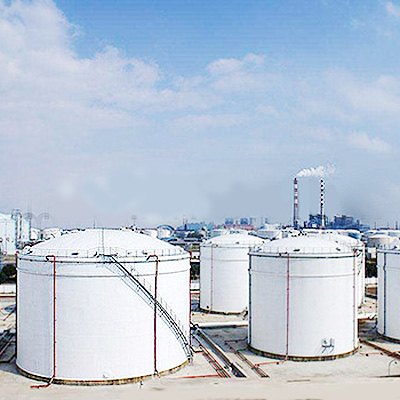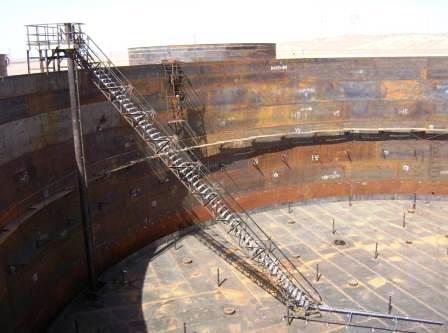How Welding Evaluation Works: A Comprehensive Overview for Professionals
Welding evaluation plays an important function in ensuring the safety and security and dependability of welded structures. It involves a methodical technique that consists of both visual inspection and progressed screening approaches. Specialists have to familiarize themselves with vital requirements and regulations governing the market. Comprehending the typical problems that can occur during welding is vital. This guide will discover these elements in information, offering insights into the processes that promote high quality and integrity in welding.
Understanding the Importance of Welding Examination
While lots of may take too lightly the importance of welding inspection, it plays an important function in making certain the honesty and security of bonded frameworks. Effective welding inspection recognizes potential defects and imperfections that can jeopardize architectural toughness and bring about devastating failings. The examination process incorporates numerous strategies, such as aesthetic assessments, ultrasonic testing, and radiographic assessments, each adding to the general assessment of weld top quality.
Along with securing the architectural honesty, welding evaluation guarantees conformity with industry standards and customer requirements. By ensuring that welds satisfy called for tolerances and characteristics, evaluations assist keep the dependability and longevity of parts in different applications, from building to aerospace. Furthermore, an extensive assessment procedure fosters a culture of high quality and responsibility amongst makers and welders. Ultimately, welding inspection is not simply a step-by-step action; it is a crucial method that underpins the safety and security and efficiency of engineered systems throughout varied fields.
Trick Criteria and Laws in Welding Inspection
The structure of reliable welding assessment rests on adherence to developed regulations and criteria. Different companies, such as the American Welding Culture (AWS) and the American National Criteria Institute (ANSI), stated guidelines that guarantee top quality and safety in welding methods. Key standards, such as AWS D1.1 for architectural welding and ASME Area IX for stress vessels, supply extensive requirements for welding treatments, certifications, and examinations. Regulative frameworks, consisting of those from the Occupational Security and Health And Wellness Management (OSHA), required safety techniques and worker defenses in welding settings. Compliance with these requirements is essential for accomplishing consistent weld top quality and decreasing the threat of failures. Furthermore, worldwide requirements like ISO 3834 further enhance international uniformity in welding examination methods. Specialists must stay informed about these guidelines to ensure that their inspection methods straighten with market assumptions and legal requirements, thus protecting both personnel and structural stability.
First Prep Work and Aesthetic Inspection Techniques

Efficient welding assessment starts with a detailed pre-inspection list that assures all essential conditions are fulfilled before the real evaluation occurs. Following this prep work, visual issue recognition plays an important role in examining weld quality, allowing examiners to identify concerns such as fractures or inappropriate combination. With each other, these methods develop the foundation for an effective welding inspection process.
Pre-Inspection Checklist
Before commencing any type of welding evaluation, an extensive pre-inspection list is vital to assure that all essential preparations are completed which visual inspection techniques are effectively used. Trick components of this list include verifying the welding procedure requirements (WPS), seeing to it all equipment is calibrated and in excellent working condition, and validating that the assessor possesses the needed accreditations. In addition, it is important to evaluate any previous inspection records and to examine the job environment for security dangers. The assessor ought to likewise confirm that all relevant documentation, such as product certificates and examination documents, is conveniently available. Completing this list aids to establish a strong structure for an effective inspection procedure, improving the dependability of the results obtained.
Visual Defect Recognition
A successful aesthetic problem identification process begins with cautious initial prep work and the application of well-known visual inspection techniques. Assessors need to assure that the welding location is clean and well-lit, as sufficient presence is necessary for spotting defects. A complete exam of the weld joint's surface area permits for the identification of stoppages, such as fractures, damages, or original site porosity. Assessors commonly utilize devices like multiplying glasses or mirrors to boost their sight of hard-to-reach locations. Furthermore, they need to recognize with the particular welding requirements and guidelines pertinent to the project. By sticking to these methods, examiners can successfully determine prospective issues, protecting the stability of the weld and conformity with sector requirements.
Non-Destructive Testing Approaches: A Review
Non-destructive screening (NDT) techniques play a necessary role in the welding inspection procedure by making sure the stability and dependability of bonded structures without triggering any kind of damages (API 650 Welding Inspection). These methods enable inspectors to evaluate the quality of welds while protecting the parts being analyzed. Common NDT techniques include ultrasonic screening, radiographic testing, magnetic particle testing, and dye penetrant testing, each offering one-of-a-kind benefits
Ultrasonic testing utilizes high-frequency sound waves to identify internal defects, while radiographic testing makes use of X-rays or gamma rays to visualize the internal framework of welds. Magnetic fragment screening discloses surface area and near-surface flaws by using a magnetic area and iron particles to the weld area. Dye penetrant testing highlights surface-breaking problems with the application of a tinted dye. With each other, these NDT methods supply crucial insights right into weld quality, enabling experts to make informed decisions pertaining to safety and conformity in welding applications.
Typical Defects and Their Effects
Identifying usual flaws in bonded joints is necessary for maintaining architectural stability and security. Different problems can arise throughout the welding process, each bring potential ramifications for the overall performance of the framework. Porosity, characterized by tiny gas pockets within the weld, can weaken the joint and compromise its load-bearing capability. Splits may establish due to thermal tension or inappropriate cooling, resulting in prospective failing under stress and anxiety. Insufficient blend takes place when the weld steel does not completely bond with the base material, resulting in weak joints that may not stand up to intended lots. Undercutting, where the base steel is worn down, can likewise reduce additional reading the efficient cross-section of the weld. Additionally, excessive reinforcement can create tension focus that can lead to failing. Recognizing these flaws without delay permits rehabilitative procedures, making sure the durability and dependability of bonded structures in critical applications.
Tools and Equipment Utilized in Welding Evaluation
Effective welding evaluation depends on a variety of specialized tools and tools to assure the high quality and integrity of bonded joints. Crucial tools include aesthetic inspection tools, such as multiplying glasses and borescopes, which permit inspectors to carefully examine welds for surface area flaws. Non-destructive screening (NDT) methods, such as ultrasonic screening, radiographic testing, and magnetic particle testing, are fundamental for determining internal defects without damaging the product.
Dimension devices, consisting of calipers and weld gauges, aid assess measurements and ascertain conformity with specs. Additionally, solidity testers assess the mechanical homes of welded joints. Individual protective devices (PPE) is also critical, safeguarding the security of examiners while operating in possibly hazardous environments (API 650 Welding Inspection). Each tool serves a certain objective, collectively improving the performance of welding Get the facts evaluation and adding to the dependability of finished jobs
Frequently Asked Inquiries
What Credentials Are Required to Come To Be a Welding Examiner?
To end up being a welding examiner, people commonly need pertinent qualifications, such as AWS CWI or CSWIP, along with experience in welding processes, design principles, and knowledge of examination strategies, safety and security criteria, and applicable codes.
How Commonly Should Welding Inspections Be Carried Out?
Welding assessments ought to be conducted regularly, ideally at various task stages, including pre-weld, during-weld, and post-weld. Frequency may additionally depend on market requirements, project requirements, and the intricacy of the welds included.
Can Welding Defects Be Fixed After Examination?

Yes, welding problems can usually be repaired after examination. Depending on the intensity and sort of issue, suitable approaches such as revamping or additional welding might be employed to bring back architectural integrity and safety and security conformity.
What Industries Require Regular Welding Assessments?

Numerous industries, consisting of building and construction, production, aerospace, and automotive, call for routine welding evaluations - API 650 Welding Inspection. These inspections guarantee adherence to safety criteria and quality assurance, decreasing dangers connected with structural honesty and operational efficiency in welded components
Just how Do I Select a Welding Evaluation Solution?
To choose a welding examination solution, one need to think about qualifications, experience, certifications, and sector track record. Furthermore, examining client testimonials and ensuring the solution meets relevant criteria can aid ensure top quality examinations and reputable outcomes.

While many might undervalue the value of welding inspection, it plays a necessary role in making certain the honesty and safety of bonded structures. Key criteria, such as AWS D1.1 for architectural welding and ASME Area IX for pressure vessels, give comprehensive criteria for welding procedures, certifications, and inspections. Efficient welding assessment starts with a complete pre-inspection list that guarantees all needed problems are satisfied before the actual assessment takes location. Before starting any type of welding inspection, a complete pre-inspection checklist is essential to assure that all needed preparations are finished and that aesthetic evaluation methods are efficiently employed. Non-destructive screening (NDT) techniques play an important function in the welding inspection procedure by guaranteeing the honesty and dependability of welded structures without triggering any kind of damages.